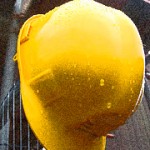Slips, trips, and falls arent at the top of anyones most glamorous EHS topics list. Many people perceive slips, trips, and falls as minor incidents resulting solely from either carelessness or clumsiness. In fact, losing your footing is the basis for basic comedic art (ever watch The Three Stooges or Americas Funniest Home Videos?)
Quite the opposite -- slips, trips, and falls are a very costly and serious worker safety issue. In 2008, these incidents cost American businesses a staggering $13.67 billion in direct workers compensation costs. Thats more than any other cause and more than the combined cost of the third through sixth ranked causes.
Injury, Illness and Death Facts You Should Know
Slips, Trips, and Falls .
- Result in back injuries, strains, sprains, bruises, broken bones, concussions, and even death!
- Cause 15% of all accidental deaths, and are second only to motor vehicles as a cause of fatalities.
- Were the fourth leading cause of fatal work injuries in 2008 (13.4%, or 700 out of 5,214 fatalities).
- Rank as the second leading cause of disabling occupational injury.
- Are the third leading cause of all occupational injuries/illnesses (21.8%) and injuries/illnesses resulting in days away from work (21.4%).
How can slips, trips, and falls be prevented?
As with most safety hazards, slip, trip, and fall hazards can be minimized with a combination of good work practices, proper use of appropriate equipment, proper facility and equipment maintenance, and worker training. OSHAs Walking/Working Surfaces - Safety and Health Topic page provides links to all the applicable standards. Some basic preventive practices include:
- Good housekeeping
- Keep floors clean, dry, and sanitary
- Clean up spills promptly
- Keep aisles and walkways free of obstructions and clutter
- Footwear
- Fit properly
- Require slip-resistant foot in areas prone to wet or slippery conditions
- Fall prevention and protection
- Provide appropriate fall arrest systems
- Facilities and equipment
- Walking and working surfaces
- Floor surfaces should not be slippery or uneven
- Install non-slip flooring in areas prone to wet or slippery conditions
- Maintain floors in good condition
- Equip elevated working surfaces and stairways with guardrails
- Protect floor holes such as drains with grates or covers
- Promptly remove ice and snow from walkways, parking lots, etc.
- Adequate lighting
- Ladders
- Provide properly rated ladders
- Maintain ladders in good condition
- Walking and working surfaces
- Training
- Provide worker training for
- Slip, trip, and fall hazards
- Ladder use
- Personal fall arrest systems
- Provide worker training for
Dont Slip Up on Safety!
Bruising, twisting or breaking a bone makes your work life and personal life extra challenging its worth it to take a few minutes to prevent the accident from ever happening. On TV and in the movies, slips and other footing mishaps are carefully orchestrated with hidden padding, stunt doubles, some great camera tricks, and, of course, an endless supply of retakes. When youre working on the job, theres only one chance!
Using the tips listed above, take a look around your workplace to see if it meets the criteria to prevent slips, trips and falls. Dont forget to look at your own feet to see that you are properly dressed for the environment and job duties. If you see a situation that is unsafe or could potentially be a slip, trip and fall hot spot, make sure you point it out to your coworkers and safety officer so that a permanent solution can be found.
Has it happened to you?
Have you experienced a slip, trip or fall on the job? Could it have been prevented? What was the outcome for you and your company?










